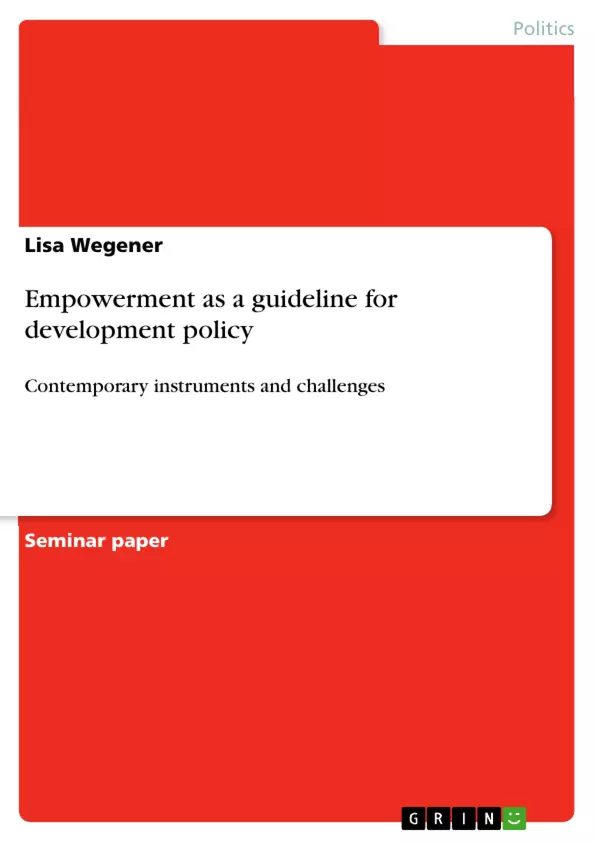In 2010, the German Federal Ministry for Economic Cooperation and Development is equipped with approximately six billion euros – the highest budget it has ever had on its disposal. But still, the choir
of critics is growing louder. One group is unsatisfied with the amount of money provided. They claim that the poverty of more than two billion people in the world cannot be overcome with 104 billion
dollars – the worldwide amount of development aid in 2006, which is only one third higher than the budget of North Rhine-Westphalia. The other group of critics points to the fact that more than 500 billion dollars of development aid have been spent since the 1960s – whereas poverty, public debts and violent conflicts in the Global South3 have not at all diminished. They plead for a renewal of development policy concepts. One of those more progressive concepts is the idea of empowerment, which I am going to examine in this paper.
Inhaltsverzeichnis (Table of Contents)
- Introduction
- The emergence and meaning of empowerment as a guideline for development policy
- The emergence of the empowerment concept out of a gender perspective
- Dimensions of empowerment
- Definitions of empowerment
- Implementing empowerment
- Measuring empowerment
- Critique
- Instruments of empowerment in the public sphere: Budget support
- Definition, objectives and preconditions
- Effects, risks and chances
- Instruments of empowerment in the private sphere: Microfinance
- Definition, demand and supply, products and services
- Objectives, outreach and impact
- Conclusion
Zielsetzung und Themenschwerpunkte (Objectives and Key Themes)
This paper aims to examine the evolution, meaning, and significance of "empowerment" within the framework of development policy. The paper explores two types of empowerment instruments: public sector initiatives like budget support and participatory budgeting, and private sector approaches like microfinance and social business.
- The emergence and evolution of the concept of empowerment, particularly from a gender perspective.
- The various dimensions and definitions of empowerment, including its implications for individual, family, community, and societal levels.
- The analysis of specific empowerment instruments in both the public and private spheres, evaluating their effectiveness and potential challenges.
- The exploration of how these instruments contribute to or hinder the process of empowering individuals and communities.
- The challenges and complexities of measuring and implementing empowerment initiatives.
Zusammenfassung der Kapitel (Chapter Summaries)
The first chapter provides an introduction to the paper, highlighting the growing criticism of traditional development aid approaches and the need for more effective strategies. The second chapter delves into the concept of empowerment, tracing its origins in gender discourse and examining its various dimensions, definitions, and implementation methods. The third chapter focuses on budget support as an instrument of empowerment within the public sphere, analyzing its objectives, preconditions, effects, and potential risks and benefits. The fourth chapter explores microfinance as an empowerment instrument in the private sphere, discussing its key features, objectives, reach, and impact.
Schlüsselwörter (Keywords)
The primary keywords and focus topics of this paper are: empowerment, development policy, gender perspective, public sphere, budget support, private sphere, microfinance, social business, individual empowerment, community empowerment, sustainable development, Global South, poverty reduction, and social change.
- Quote paper
- Lisa Wegener (Author), 2010, Empowerment as a guideline for development policy, Munich, GRIN Verlag, https://www.grin.com/document/168590



